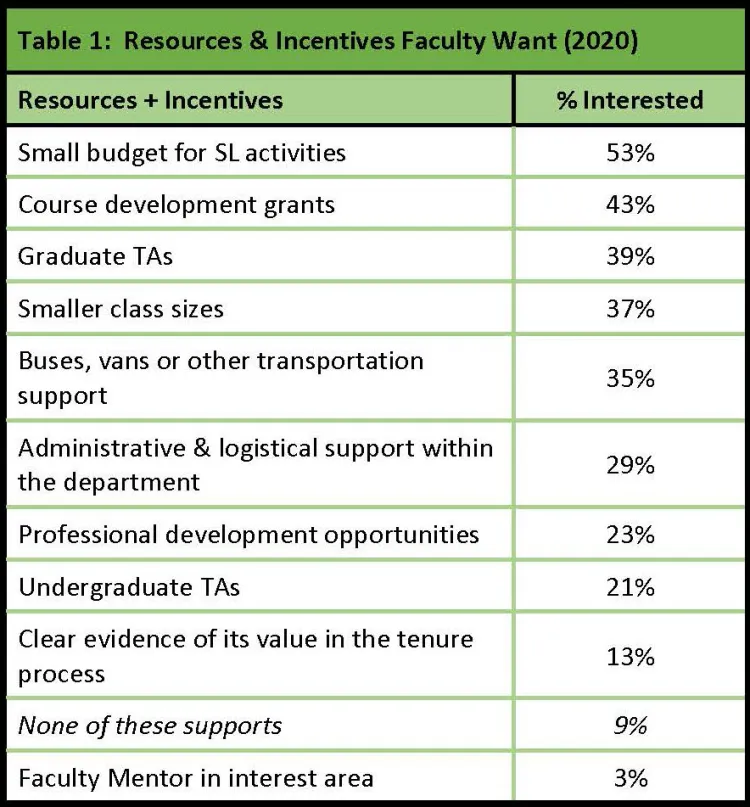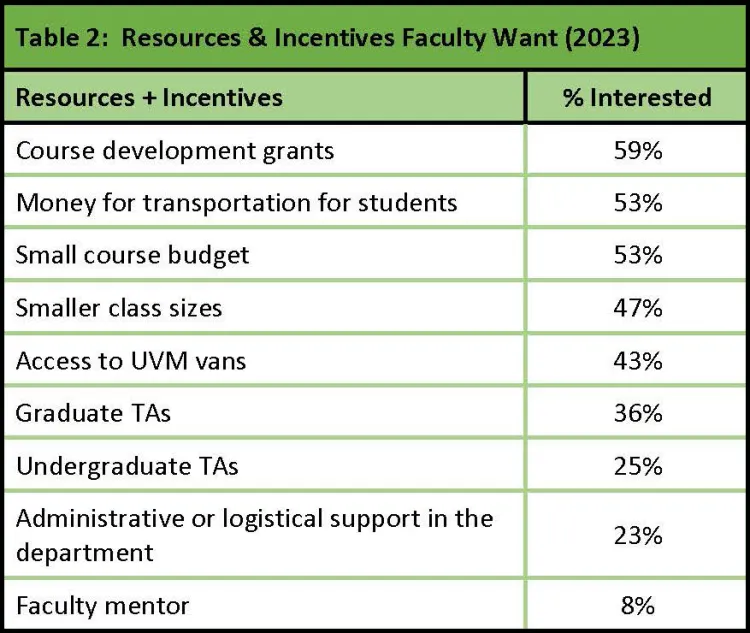In December, CELO Director Susan Munkres presented about CELO’s work to the Academic Leadership Council, composed of Deans, Vice Provosts, and Executive Directors, and convened by Provost Patty Prelock. Showcasing how CELO’s work is aligned with the Academic Success Goals, we focused on how faculty are able, even without significant additional resources, to design community-based learning experiences across academic units and disciplines.
This past year, over 50% of UVM graduating seniors had taken and passed at least 1 designated community-engaged course. This is the first year that number has exceeded 50%, representing a significant post-pandemic increase. The extent of service learning (SL) and civic learning (CL) courses helps to fulfill Academic Success Goal 1.2.B, ensuring students have access to documented high-impact educational practices (of which service-learning is one), and also directly addresses 3.1.A, to “provide and support community-engaged learning experiences for students that address community priorities and goals.”
To have the most updated information about resource allocation for community-engaged teaching, CELO conducted a brief survey in late November, repeating the relevant questions from our 2020 faculty survey. We briefly summarized the resulting data to the ALC, but will be continuing in conversations with the Vice Provost for Faculty Affairs and leaders of units. For now, below are the 2020 & 2023 results of our questions about what additional workload determination and resource allocations faculty had received for community-engaged teaching, and what resources would be useful.
What stands out to us is that faculty do seem to have more additional supports offered now than in the time period covered in the 2020 survey. However, many of the same challenges with the additional work of community-engaged teaching were still apparent. When asked about resources they want, the vast majority of respondents wanted at least one additional resource, and the average number of additional resources desired was 3.6 (see second table below). However, what faculty want varies: for example, some faculty already have access to graduate TAs or course budgets within their units, while others do not. Transportation isn't required for courses that place students in downtown Burlington, but service learning outside of Chittenden County requires signifiant logistical support. Therefore, a particular resource desired by only 30% of faculty may still be very useful, as the most desired resource for that fraction of faculty. This tells us that we need to maintain flexibility in the allocation of resources to faculty.
Please reach out if you are interested in collaborating on this project or would like to provide additional feedback: celo@uvm.edu.


